
The California Department of Finance released new county population estimates in December 2018 and they show a steady slowdown in the level of regional population growth. The main determinants of the slowdown are declines in the level of births and increasing migration of residents out of the Bay Area.
The region added just 38,000 residents in 2018 down form levels of 80,000 to 100,000 just three years earlier.
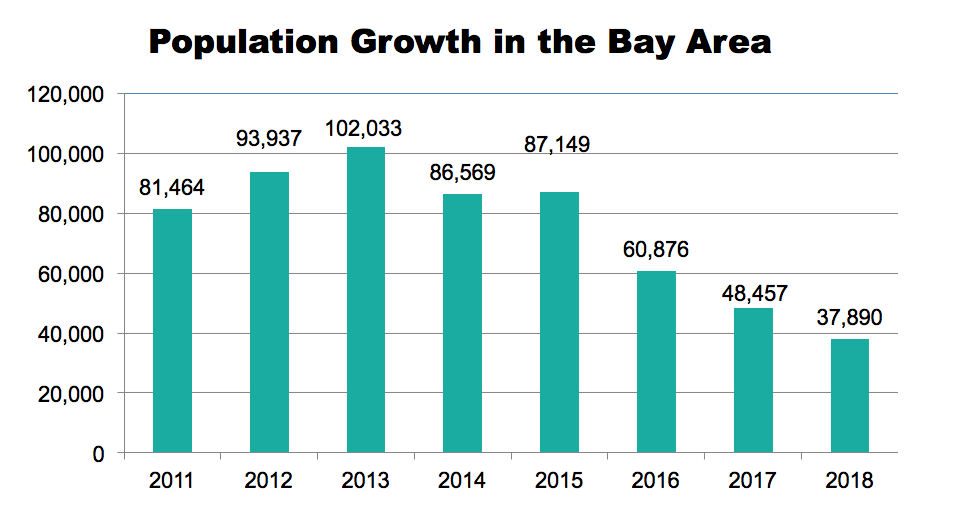
Although foreign immigration levels remained strong, domestic migration turned increasingly negative after being positive earlier in the decade as high housing prices forced some residents to leave the region.
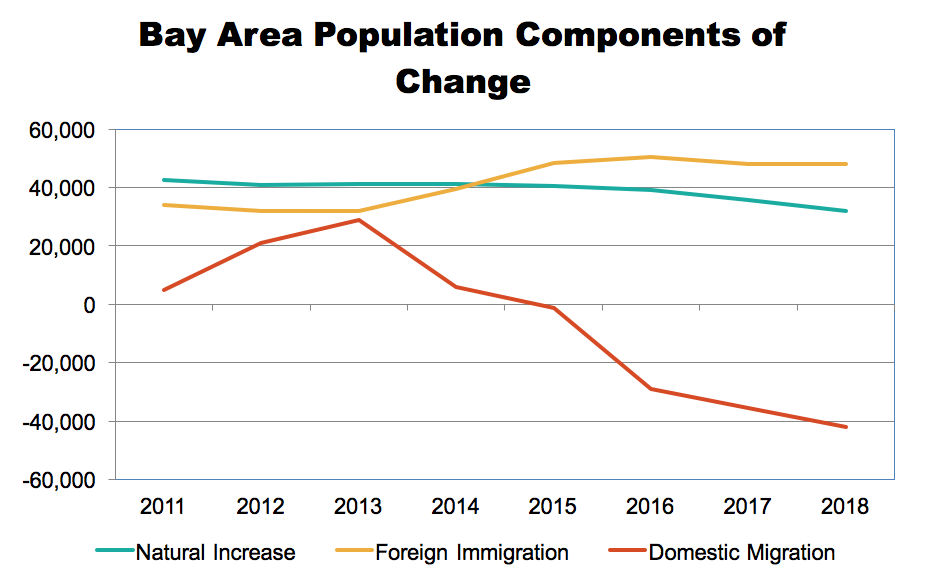
In addition the number of births has trended down each year as the number of annual deaths is increasing so the contribution of natural increase to population growth is diminishing. In fact in 2018 foreign immigration accounted for more than the total population growth in the region.
Population growth since 2010 has outpaced the state and national growth rates but that is largely the result of growth before 2016
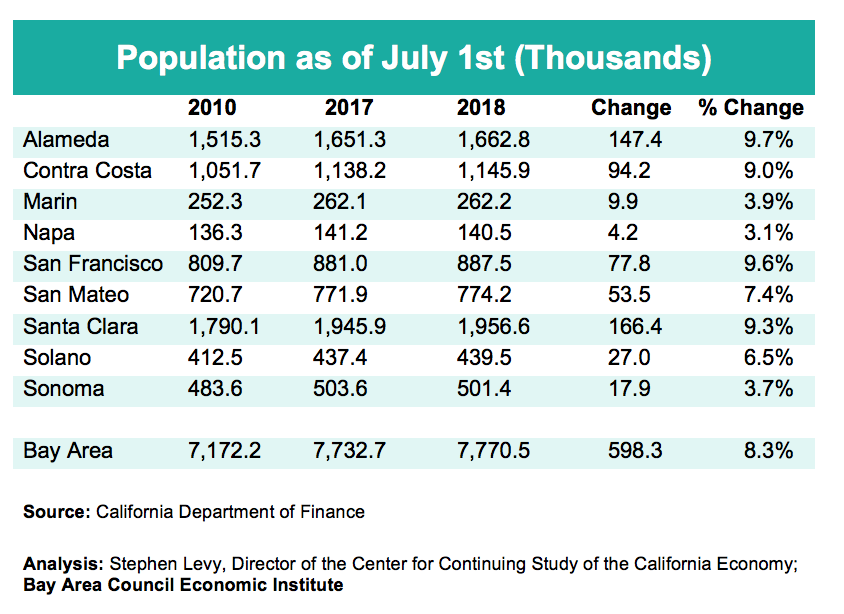
The chart below shows the steadily declining annual population growth in the region’s largest counties. Data is in thousands.
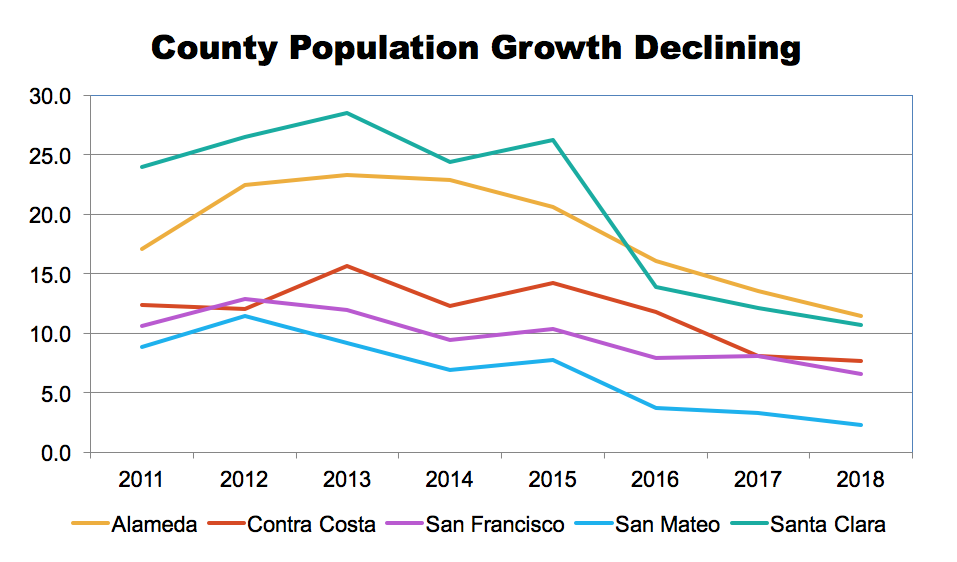
The decline is mostly the result of increasing out migration with the largest outflow from Santa Clara and Alameda counties. Though the trend is clear and understandable it is important to remember that even in 2018 outflows were just far less than 1% of the region’s total populations.
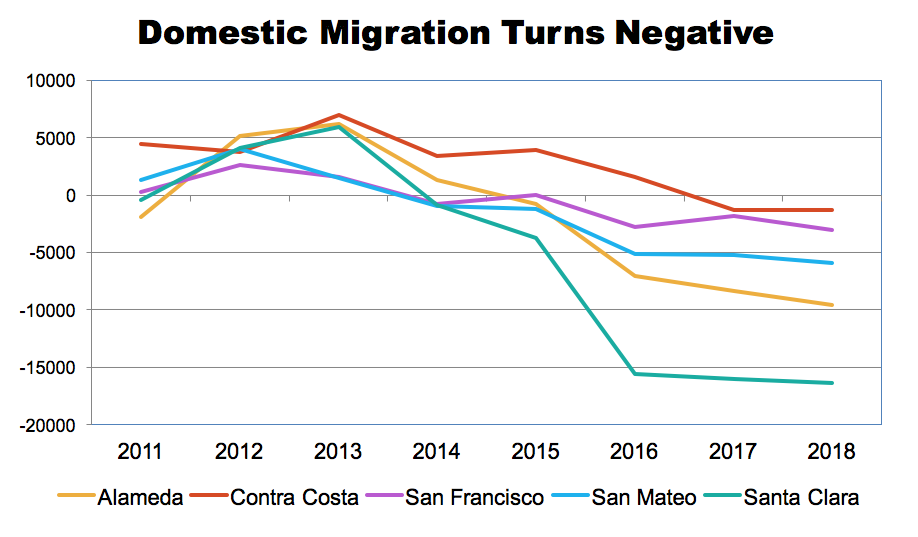
There are anecdotal reports of residents moving to adjacent counties. This may be true but inflows into adjacent counties are far less than the level of out migration from the region implying that many are leaving the region’s job market.
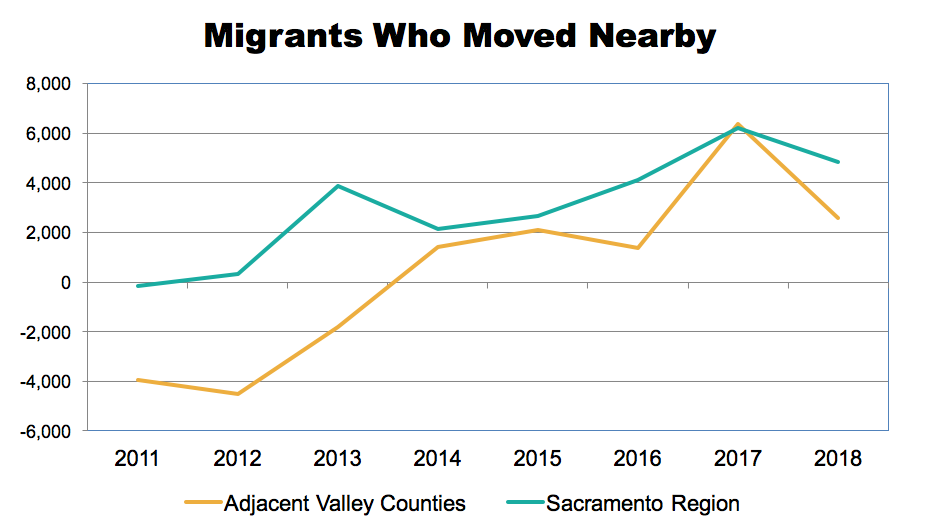
Migration to the Sacramento region and nearby counties in the Central Valley has increased but was only 10,000 in the highest year.
Implications
The region has reached the point where future labor force growth will need to come mainly from new residents and new housing. Slower population growth fueled by migration outflows combined with the coming surge in retirements underscore the importance of expanding housing and housing affordability to support planned job growth and maintain economic competitiveness.
The next needed steps involve lowering the cost of building new housing, changing zoning to allow more and less expensive housing to be built and, hopefully, state funding to offset some costs of housing. Perhaps the hardest challenge to overcome is the lack of affordable housing for middle income residents who are not eligible for subsidized housing even if it were available in sufficient quantity.
The bottom line, which should be understandable to Bay Area Council members, is that it is really hard if not impossible under current rules to build housing that is affordable to middle income residents yet pencils out for developers.
For readers who want to follow the recommendations of the Committee to House the Bay Area (CASA), look at the recent meeting packets for December at https://mtc.ca.gov/our-work/plans-projects/casa-committee-house-bay-area/casa-meeting-schedule.